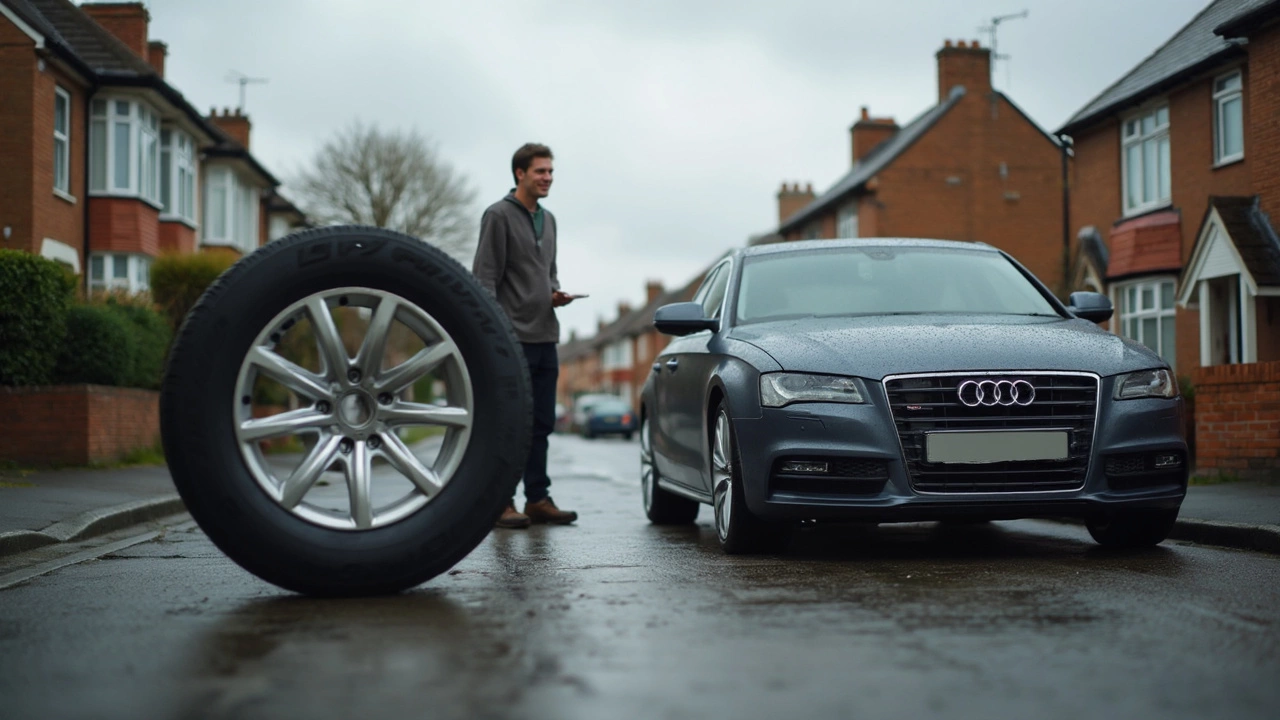Wheel Size Guide: Choose the Right Fit for Your Car
When you think about changing wheels, the first question is usually "what size?" It sounds simple, but the numbers hide a lot of detail. Getting the right diameter, width, and offset can boost your car’s look, handling, and safety. Below is a straight‑forward way to figure out what works for your ride, whether you’re wrapping it in Nottingham or just looking for a fresh set of alloy wheels.
Read the Numbers on Your Current Wheels
The sidewall of any tyre shows a string like "225/45R17 95V". The last number (17) is the wheel diameter in inches. The first two numbers (225 and 45) tell you the tyre width and sidewall height, which also matter when you change the rim. Start by writing down the diameter, width, and offset of the stock wheel. You’ll find the offset stamped on the back of the rim (e.g., +35) or in your owner’s manual.
Match Diameter and Width to Your Tyres
Keep the diameter the same as the original unless you’re ready to buy new tyres that fit a larger rim. Going up one size (e.g., 17" to 18") often means a lower‑profile tyre, which can improve steering feel but may make the ride firmer. Width is a bit more flexible – a 2‑inch wider rim gives a broader stance and can look aggressive, but you must stay within the tyre’s recommended width range. If the tyre says 225‑45, a 7‑inch wide rim is safe; a 9‑inch rim could overstretch the sidewall.
Offset controls where the wheel sits in the wheel well. Positive offset pushes the wheel inward, negative moves it outward. Too much positive offset can cause the tyre to rub the inner fender, while too much negative offset may hit the suspension or scrub the outer fender. Aim for an offset that keeps the wheel centered under the hub and clears the brake caliper.
One quick check is to compare the bolt pattern – the number of bolt holes and the circle diameter (e.g., 5×114.3). If those don’t match, the wheel won’t bolt on, no matter how great the size looks on paper.
How Wheel Size Affects Styling and Wraps
At Nottingham Car Wraps & Styling we often see customers pick larger wheels to fill the wheel arches after a full‑wrap. A larger diameter can make a low‑profile tyre visible, highlighting the wrap’s colour and graphics. However, a bigger wheel also changes the visual proportion of the car. If the wheel is too big, the car can look top‑heavy; too small and the wrap may look tucked under the wheel.
When you combine a new wheel size with a vinyl wrap, think about the overall diameter. A larger wheel plus a low‑profile tyre can reduce the overall tyre height, which might affect speedometer accuracy and ground clearance. Our technicians can recalibrate the speedometer and check for clearance before the wrap goes on.
Choosing the right size also helps protect the wrap from curb rub. Wheels that sit too far out can scrape the side of the vehicle when you park close to a curb, potentially damaging the wrap’s edge. A well‑fitted wheel with correct offset reduces that risk.
Bottom line: start with your stock specs, decide if you want a bigger look or a tighter stance, and then check tyre compatibility and offset. If you’re unsure, bring your car to our Nottingham shop. We’ll measure, suggest safe sizes, and make sure the wrap and wheels work together without any surprises.
Ready to upgrade? Grab your current wheel data, think about the look you want, and give us a call. We’ll help you pick the perfect wheel size, fit the wrap flawlessly, and keep your ride looking sharp on every street in Nottingham.
Wondering which wheel size gives the smoothest ride on your car? This article looks at how alloy wheel size affects comfort, road feel, and your everyday driving experience. You'll get clear advice, real-world tips, and unexpected facts about why bigger isn't always better. By the end, you'll know just what to look for if comfort is your top priority. It's a practical, no-nonsense guide for drivers who want their ride to feel just right.

